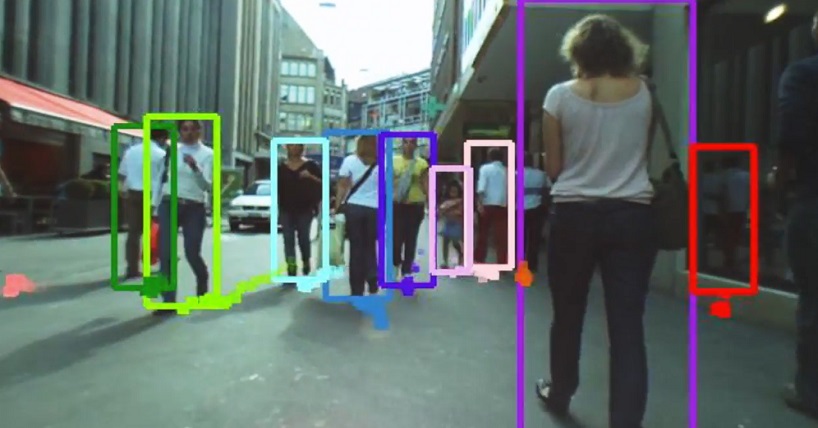Intelligent Sensing and Communications
Developing real world solutions for communications, sensing and signal processing.
Our research
The Intelligent Sensing and Communications (ISC) group was first established in 1989. Our research explores the whole spectrum of communications and digital signal processing, from underpinning theories to applications with industry leading partners.
The group's research comprises 3 themes:
- Communications - including wireless, optical and underwater acoustic communications.
- Signal Processing - including machine learning and AI, for applications in security, healthcare, environment and finance.
- Sensor Systems - for non-destructive testing/evaluation, biomedical sensing/imaging and environment monitoring.
We deliver world leading, high impact research in these areas which supports world-class education through our BEng, MEng, MSc and PhD programmes.
.jpg)
Current and recent projects
- Multi-task Learning for GEO-located Multimodal Data, Project Leader(s): Dr Mohsen Naqvi, Project Dates: 1 Dec 2022 to 31 July 2024
- Intelligent Sensing and AI for Mental Health Detection, Project Leader(s): Dr Mohsen Naqvi, Project Dates: 1 Sep 2022 to date
- USMART - smart dust for large scale underwater wireless sensing, Project Leader(s): Jeffrey Neasham, Project Dates: 1 May 2017 to 30 April 2020
- Cooperative backhaul aided next-generation digital subscriber loops, Project Leader(s): Dr Charalampos Tsimenidis, Project Dates: 1 October 2015 to 21 December 2018
- Full-Duplex For Underwater Acoustic Communications, Project Leader(s): Dr Charalampos Tsimenidis, Project Dates: 1 January 2018 to 31 December 2020
- INNOvative monitoring and predictive maintenance solutions on lightweight WAGon (INNOWAG), Project Leader(s): Dr Cristian Ulianov (Mechanical Engineering), Project Dates: from 1st January 2017 to 30th June 2019
- Multimodal information processing for security and surveillance, Project Leader(s): Dr Mohsen Naqvi
- Training Network in Non-Destructive Testing and Structural Health Monitoring of Aircraft Structures (NDTonAIR), Project Leader(s): Prof. Gui Yun Tian, Project Dates: from 1st October 2016 to 31st September 2020
- University Defence Research Collaboration (UDRC), Project Leader(s): Professor Jonathon Chambers, Project Dates: 2013 to 2018
- Accurate blood pressure measurement, Project Leader(s): Prof. A, Murray, Project Dates: from 1st July 2016 to 30th June 2019
Underwater Communications
Our pioneering research is in underwater acoustic communication and positioning technology. It is commercialised via 4 industrial partners (Blueprint Subsea, Tritech, Succorfish and WSENSE). An example of this is the Seatrac range of products. Manufactured under licence by Blueprint Subsea, they are being used worldwide for communication/navigation of underwater vehicles and divers.
Innovations have enabled vast reduction in cost, energy consumption, sound emission and size. This while maximising data rate and range. This is helping to realise the “Internet of Underwater Things”. These are large scale, bio-friendly subsea networks. They deployed for marine environment and security monitoring. This work is also contributing to emerging standards for underwater acoustic communication.
Read more about smart dust for large scale underwater wireless sensing
Intelligent Sensing for Healthcare
Advances in artificial intelligence and machine learning have led to new systems that can transform healthcare.
Our research is helping to:
- multimodal data and trustworthy AI for healthcare applications
- help clinicians to perform the early diagnosis and thereby administer effective treatment
- understand health risks
- predict disease progress
- provide health interventions for improved patient outcome
Our research and expertise of signal and image processing are proving invaluable. It has had a huge impact in supporting healthcare professions.
Our ongoing research collaborations are with the Adult ADHD Service at the Cumbria, Northumberland, Tyne and Wear NHS Foundation Trust, and the Ophthalmology Department at the Newcastle upon Tyne Hospitals NHS Foundation Trust.
Teaching
Our Electrical and Electronic Engineering Undergraduate Programmes give students a path to becoming professional engineers.
Our Electrical and Electronic Engineering Postgraduate Taught (MSc) Programmes equip students with the advanced skills and expertise to help shape the world.

Academic
Cambridge University, Imperial College, Leeds University, Sheffield University, Manchester University, University of Bath, Warwick, Lancaster University, Queen's University of Belfast, University of California, USA, Sidney University, Australia, Southwest Jiaotong University China, Queen Mary University of London, Queen's University Belfast, Institute of Molecular Medicine USA, Regional Hospitals, Technical University of Cartagena
Industrial
Cambridge Broadband Ltd, BAE, Tritech International, HW Communications, Rinicom Ltd, Shlumberger, BT Medical, Foster Findlay, QinetiQ, e-Therapeutics, Torridon, Nortel, Rolls Royce, Alstom Power, Cross-Government Departments, British Energy, The Welding Institute (TWI), Bioinnovel, Photon fire, National Physical Laboratory (NPL), RWE nPower.
Join us
The ISC is a diverse, internationally-leading group in research, teaching and engagement with industry. Our Group includes a team of academic, research and teaching staff, and PhD and MSc students.
We offer exciting opportunities.
We often have new vacancies within our team. Check out Newcastle University vacancies for current opportunities.
We actively seek and recruit high-quality research students and several funded PhD studentships are available for Home and EU prospective students. The University also offers scholarships for the very best international students.
Contact us
Group Head - Professor Jeff Neasham
Email: jeff.neasham@ncl.ac.uk
Telephone: +44 (0) 191 208 8850
Address: School of Engineering, Room E2.11, Merz Court, Newcastle University, Newcastle upon Tyne NE1 7RU



